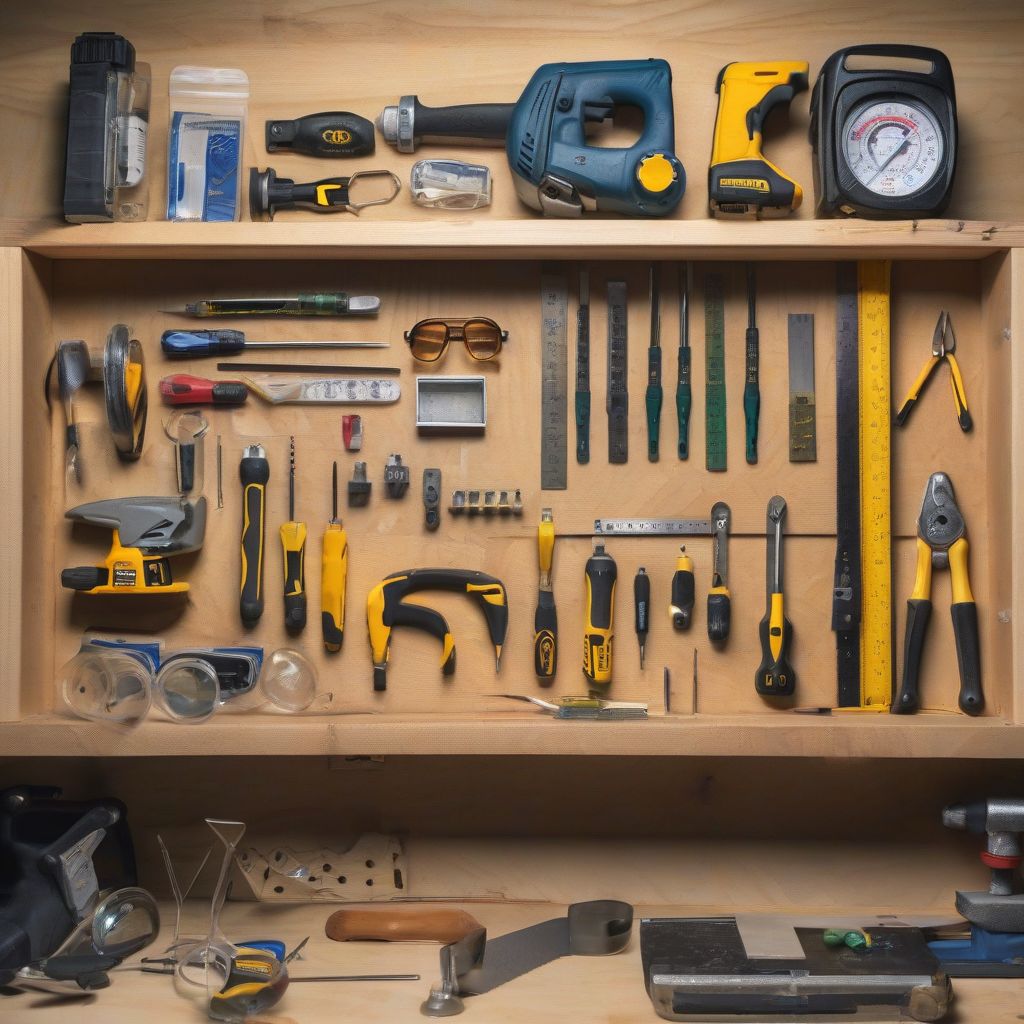Have you ever stood back, admiring a freshly painted wall or a perfectly assembled bookshelf, a glow of satisfaction warming you from the inside out? That, my friend, is the magic of DIY. But what if you could transform that spark of accomplishment into a roaring fire of expertise? This article is your guide to leveling up your DIY home improvement skills, turning you from a weekend warrior into a true home renovation hero.
Mastering the Fundamentals: Building a Solid Foundation
Like any good recipe (and as a nutritionist, I know a thing or two about those!), successful DIY starts with the right ingredients. Before tackling ambitious projects, solidify your foundation in the basics. This includes understanding common tools, mastering essential techniques like measuring, cutting, and fastening, and knowing how to read blueprints or plans. There are tons of free resources available online, from YouTube tutorials to detailed blog posts, like “The Best Power Tools Every DIYer Should Own” (https://diyhomeprojectshub.com/the-best-power-tools-every-diyer-should-own/), which can help you build a robust toolkit of knowledge.
Essential Skills for Every DIYer
- Accurate Measuring and Marking: Precision is key. Invest in high-quality measuring tapes, squares, and levels. Learn how to use them effectively to avoid costly mistakes. A seasoned carpenter once told me, “Measure twice, cut once,” and that advice has stuck with me.
- Cutting Techniques: Whether you’re working with wood, metal, or tile, understanding proper cutting techniques is essential for achieving clean, professional results. Practice makes perfect, so don’t be afraid to experiment on scrap materials.
- Fastening Methods: From nails and screws to adhesives and joinery, knowing which fastening method is best for each situation will ensure the longevity and stability of your projects.
- Understanding Materials: Different materials behave differently. Familiarize yourself with the properties of common building materials like wood, drywall, concrete, and tile, so you can choose the right material for the job.
 DIY Home Improvement Tools
DIY Home Improvement Tools
Expanding Your Horizons: Exploring New Techniques and Projects
Once you’ve mastered the basics, it’s time to push your boundaries. Explore new techniques, such as tiling, plumbing, or basic electrical work. Start with smaller projects, like tiling a backsplash or installing a new light fixture, gradually working your way up to more complex endeavors.
Taking on Advanced Projects
- Plumbing: Learning basic plumbing repairs, like fixing leaky faucets or unclogging drains, can save you time and money.
- Electrical Work: Understanding basic electrical wiring, such as replacing switches and outlets, can empower you to tackle minor electrical projects safely.
- Tiling: Tiling is a skill that can transform any space. Start with a small area, like a bathroom backsplash, and gradually work your way up to larger projects.
- Woodworking: From building shelves to crafting custom furniture, woodworking offers endless possibilities for creative expression.
Planning and Preparation: The Key to Success
Just as a well-balanced meal requires planning and preparation, so does a successful DIY project. Before you even pick up a tool, take the time to thoroughly plan your project. Create a detailed budget, gather necessary materials, and establish a realistic timeline. As Benjamin Franklin wisely said, “By failing to prepare, you are preparing to fail.”
Essential Planning Steps
- Detailed Budget: Accurately estimate the cost of materials and tools. Factor in potential unforeseen expenses.
- Material List: Create a comprehensive list of all the materials you’ll need, including quantities.
- Timeline: Establish a realistic timeline for completing the project, breaking it down into smaller, manageable tasks.
- Permits and Inspections: Research local building codes and regulations to determine if permits are required for your project.
Safety First: Protecting Yourself and Your Home
Safety should always be your top priority. Invest in appropriate safety gear, such as safety glasses, gloves, and ear protection. Learn how to use power tools safely and follow manufacturer instructions carefully. Remember, a little precaution can prevent serious injuries.
Essential Safety Precautions
- Eye Protection: Always wear safety glasses when using power tools or working with materials that could produce flying debris.
- Hand Protection: Wear gloves to protect your hands from cuts, splinters, and chemicals.
- Hearing Protection: Use earplugs or earmuffs when operating loud power tools.
- Respiratory Protection: Wear a dust mask or respirator when working with materials that produce dust or fumes.
Continuing Education: Never Stop Learning
The world of DIY is constantly evolving, with new tools, techniques, and materials emerging all the time. Embrace a lifelong learning mindset. Attend workshops, read books and magazines, and follow online communities to stay up-to-date on the latest trends and innovations.
 Advanced DIY Project Planning
Advanced DIY Project Planning
Conclusion: Embrace the Journey of DIY Mastery
Taking your DIY home improvement skills to the next level is a rewarding journey of continuous learning and growth. By mastering the fundamentals, exploring new techniques, planning carefully, prioritizing safety, and embracing lifelong learning, you can transform your home and unlock your inner DIY potential. Remember, every project, big or small, is an opportunity to learn, grow, and create something beautiful with your own two hands. Now, go forth and build!
We encourage you to share your own DIY experiences and tips in the comments below. What projects have you tackled? What advice would you give to fellow DIY enthusiasts? We’d love to hear from you! And don’t forget to share this article with your friends and family who are embarking on their own DIY adventures.



